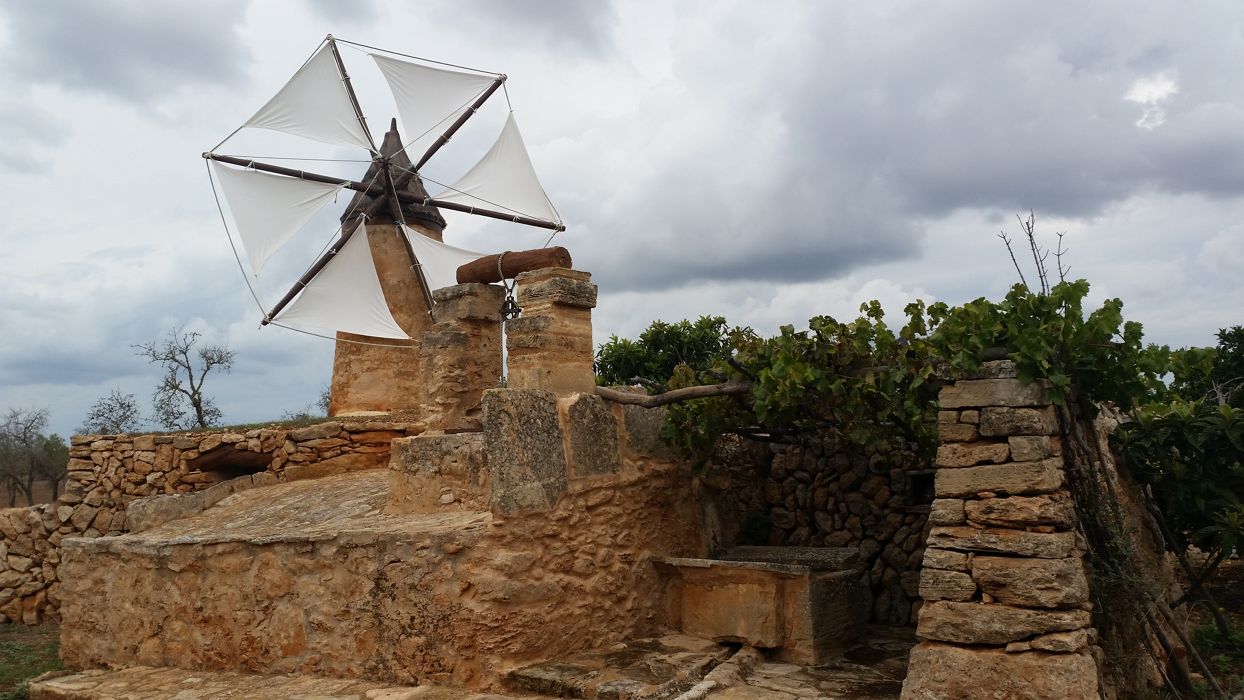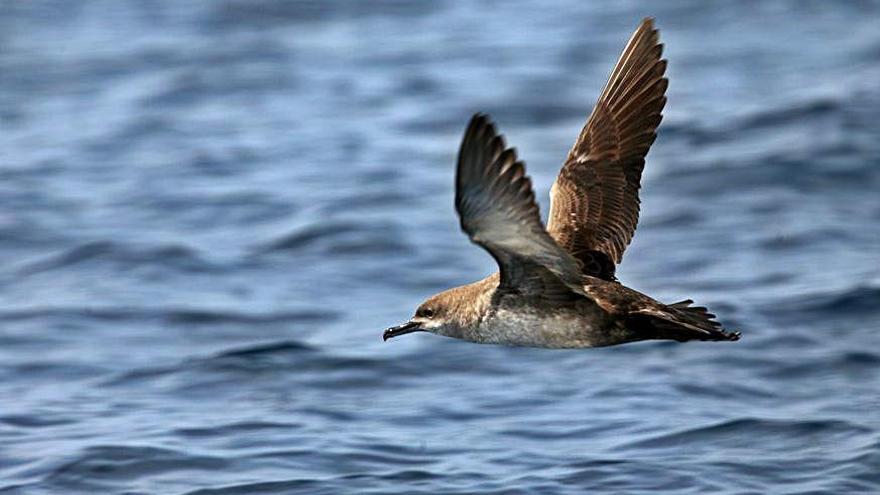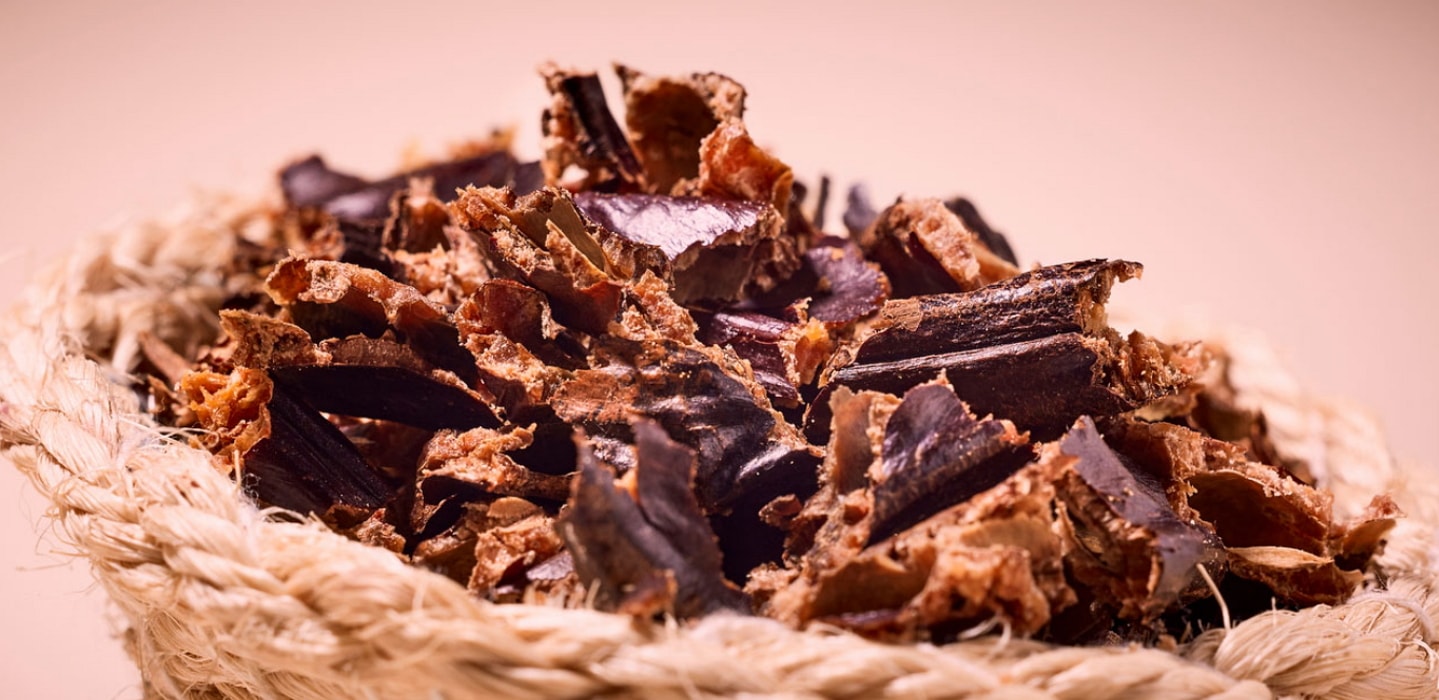The ‘possessió’ of Can Garra Seca is located in the ‘Camí de sa Torre’, in the municipality of Llucmajor and has an extension of 100 cuarteradas (about 71 hectares). It is a real hidden treasure.
It is an agricultural, livestock and forestry farm with numerous ethnological elements (flour windmill, cisterns, wells, lime kiln, barracks, cisterns, etc.), farmland with almond and carob trees, garrigue areas, etc.
The Can Garra Seca complex is a good example of the impact of human processes, both in terms of production and adaptation to the natural environment.
The ethnological elements that we can find are:
It is made up of a group of buildings from different periods, the oldest part is probably from the Islamic period and there were megalithic buildings on the estate, which have now disappeared and whose materials were used for the construction of the ethnological elements that exist today.
Orchard and flour windmill
Within the old orchard of the ‘possessió’ there is a windmill and two cisterns.
The windmill is of the narrow tower type, built in dry stone with the workroom in the lower part and with an upper area to access the guide post to guide the mill
The only documented references to this mill is the year 1831, which can be seen on the beam that supports the millstones.
Roter hut
This is another dry stone construction, only the walls were preserved and it was surrounded by lush vegetation, and its existence was unknown until 2003.
Wagon hut
It is a dry stone construction with a quadrangular shape and was used to shelter the wagon. The construction is the original one
Raft with pointed roof
It is located near the ‘roter’ hut and is a natural cavity in the rock covered with a dry stone construction in the shape of a horseshoe and the roof is a pointed vault or false vault. It has a single water inlet and faces north.
Lime kiln
Located in the scrubland, surrounded by vegetation, it is a dry stone construction that still conserves the outer ring, the mouth and the pot.
Coal bunker
Very close to the house there is a coal bunker where coal was produced in the past, which was used as fuel for the home (cooking, heating) and also for the forge of the blacksmiths.
Ponds and ‘cocons’
There is a pond and water collection system located near the road to La Figuereta, where, in addition to a large pond with water collection and conduction systems, there is a large chasm that swallows up the excess water from the pond.
Megalithic elements
The large stone blocks from ancient megalithic constructions can be recognised in different parts of the estate, especially in the buildings: in the house, walls, sheepfold; but two large, very heavy rectangular stones that were on the ground stand out, which were probably the lintels of some megalithic construction, and which now form a ‘T’.
Shared cistern
Located on the border of the estate with Can Boet. This cistern takes advantage of a large cavity and the layout of the path and serves as a water store. It has a double opening and a pulley and bucket for each farm. The water collection, filtration and distribution system is surprising. There is a large filter, a conductor, spades of different shapes and sizes and even an underground construction to fill the spades.
Gazaperas
These dry stone constructions can be found in different parts of the estate, both in cultivated and scrubland areas. They are generally circular and quadrangular in shape and would be a real larder for the inhabitants of the estate.
Flora and fauna
The area of the marina has vegetation adapted to drought such as pines, wild olive trees, mastic trees, rockroses, aladern, which are the most abundant in the garrigue, but we can also find endemic species among which some varieties of orchids that bloom from February to April stand out. Also admirable is the flower of the onion albarrana, which flowers at the end of the summer on a one-metre high, leafless stem. We can also smell the white flowers of the asparagus at the end of the summer. In the cultivated land we can find almond trees, carob trees and some fig trees.
As far as the fauna is concerned, it is common to see the quiet flight of the kite, partridges and hoopoes and many small birds. We can also see rabbits, hares, tortoises and hedgehogs.
Would you like to visit Finca Can Garra Seca in a group, with the family or simply alone or as a couple? Make an appointment by calling: 651 89 06 59 or sending an email to: pericasjaume@gmail.com
Possibility of ordering a tasting of local products at the end of the visit.




